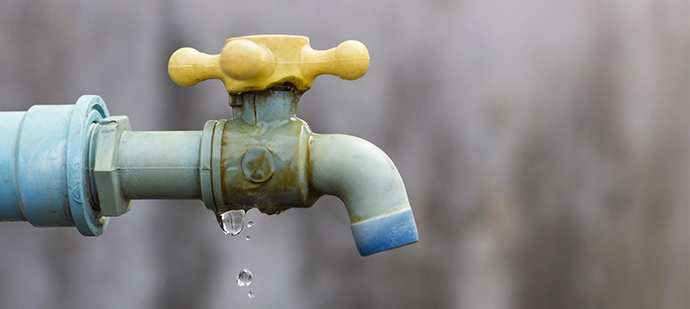6 Ways to Locate Concealed Water Leakages in Your Residence
6 Ways to Locate Concealed Water Leakages in Your Residence
Blog Article
What are your thoughts about Finding hidden leaks?

Early detection of dripping water lines can alleviate a potential calamity. Some small water leakages may not be noticeable.
1. Examine the Water Meter
Every residence has a water meter. Checking it is a guaranteed manner in which assists you uncover leaks. For beginners, switch off all the water sources. Make sure no person will flush, utilize the tap, shower, run the cleaning machine or dishwasher. From there, most likely to the meter and also watch if it will alter. Given that nobody is utilizing it, there should be no movements. That suggests a fast-moving leak if it relocates. If you spot no changes, wait an hour or 2 and examine back once more. This means you might have a slow leakage that might even be underground.
2. Check Water Consumption
If you spot abrupt modifications, despite your intake being the exact same, it indicates that you have leaks in your plumbing system. An unexpected spike in your bill shows a fast-moving leak.
A consistent rise every month, even with the same routines, reveals you have a slow leak that's likewise slowly intensifying. Call a plumber to extensively check your residential property, especially if you feel a warm area on your flooring with piping beneath.
3. Do a Food Coloring Examination
When it involves water consumption, 30% comes from bathrooms. Examination to see if they are running correctly. Decline specks of food color in the storage tank and wait 10 minutes. There's a leak between the storage tank and bowl if the color somehow infiltrates your dish throughout that time without flushing.
4. Asses Outside Lines
Do not forget to inspect your outside water lines as well. Test spigots by connecting a garden hose pipe. Ought to water seep out of the connection, you have a loosened rubber gasket. Change this as well as guarantee all connections are limited. If you have actually obtained a lawn sprinkler, it will help get it properly checked out as well as maintained every year. One little leak can lose tons of water and increase your water bill.
5. Inspect as well as Assess the Situation
Homeowners ought to make it a routine to examine under the sink counters and even inside cabinets for any kind of bad odor or mold and mildew growth. These 2 warnings suggest a leak so prompt attention is called for. Doing routine examinations, even bi-annually, can save you from a major problem.
Inspect for discolorations and also damaging as a lot of devices and also pipes have a life span. If you think leaking water lines in your plumbing system, don't wait for it to intensify.
Early discovery of leaking water lines can reduce a prospective catastrophe. Some small water leaks might not be visible. Examining it is a surefire means that aids you uncover leaks. One tiny leakage can throw away tons of water and also increase your water costs.
If you think dripping water lines in your plumbing system, don't wait for it to intensify.
How to Know If Your Home Has a Hidden Leak
Water Meter Reveals Inexplicable Water Usage
If you’d like to test whether or not there’s a leak somewhere in your home, you can do this using your water meter. Here is how to conduct the test:
Don’t use any water in your home for at least 30 minutes; this also means not turning on faucets or water-using appliances.
Go outside, and check your water meter for activity.
If your water meter shows that there was activity, even though no one was using any water, this proves that there is a leak in your home.Visible Mold or Mildew Growth
Leaks behind walls create moist, dark environments that allow mold and mildew to grow and thrive. Eventually, you might see mold growth forming on the wall closest to a hidden leak.
If mold is growing in an area that receives a high amount of moisture, such as a bathroom, it may simply be an indication that better ventilation is needed. However, if you see mold growth on a wall or the ceiling in an area where you would not expect, you probably have a hidden leak.
Musty, Mildew Odor
Sometimes you might not be able to see the mold or mildew that is growing as a result of a leak. However, the smell can give the problem away just as easily. If you catch a whiff of something musty, there’s a good chance that old water is collecting somewhere in your home that you can’t see.
Stained/Warped Walls, Ceilings, or Floors
When your home soaks up water, a variety of red flags can become visible, including ceiling stains, bubbling drywall, warped walls, and sagging floors. While these issues can be caused by excess humidity, they can also be signs that a pipe or plumbing connection has started leaking behind your walls.
Inexplicably High Water Bill
After a while, you get a general sense for what your water bill should be. If you own a pool or sprinkler system, your bill will tend to be higher during summer. However, if you receive a water bill that seems especially high, and you can’t figure out what caused it, then you may have a hidden leak somewhere that’s increasing your bill.
https://www.plumbingjoint.com/blog/2019/july/how-to-know-if-your-home-has-a-hidden-leak/

We are very curious about Leaking water lines and I am hoping you appreciated the new article. Enjoyed our piece? Please share it. Let others discover it. I am grateful for your time. Visit again soon.
Report this page